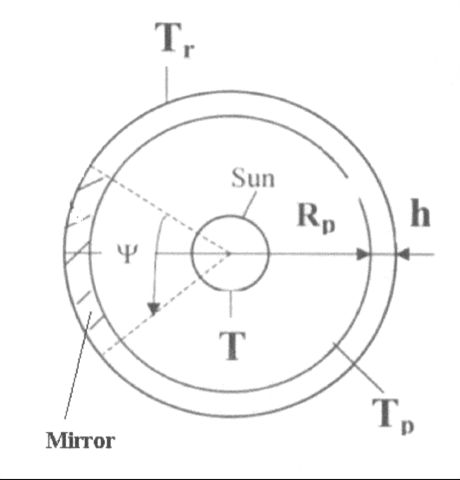stellar engine

Class C stellar engine. Without the mirror this becomes class B.
Three classes of stellar engines are defined in reference 1 below. A class A stellar engine uses the impulse of the radiation emitted by a star to produce thrust and is also called a Shkadov thruster. A class B stellar engine uses the energy of the radiation emitted by the star to generate mechanical power. It is a particular type of Dyson sphere. Stellar radiation of temperature T makes the inner surface of star's enclosing shell (thickness h, distance Rp from the star) to have a temperature Tp higher than the temperature Tr of the outer shell surface. The temperature difference Rp – Rr is used to drive thermal engines producing work. A class C stellar engine is a combination of class A and class B stellar engines as part of the shell's inner surface is covered by a mirror (see figure). Thus, a class C stellar engine could provide at the same time available work and a thrust. There is a minimum radius for a class C stellar engine to provide useful power. An optimum class C stellar engine radius Rp allowing maximum power delivery is identified in reference 2 below. In the case of our own solar system, this optimum radius is around 450 million kilometers. A and C stellar engines make the star's temperature increase significantly, which affects the thrust acting on the star.
References
1. Badescu, V. and Cathcart, R. B. "Stellar engines for Kardashev's type
II civilisations," J. British Interplanetary Soc., 53 (9/10),
297–306, 2000.
2. Badescu, V. "On the radius of the Dyson sphere," Acta Astronautica,
36 (2), 135–138, 1995.


